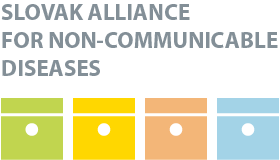—
HPI Network > HPI - Health Policy Institute > Health System in Slovakia > 7. Assessment of the health system > 7.1 Stated objectives of the health care system
7.1 Stated objectives of the health care system
Friday, 06. May 2011, 20:24 — HPI
| << PREVIOUS
7. Assessment of the health system |
Introduction – Organization – Financing – Resources – Provision – Reforms – Assessment – Conclusions – Appendices |
NEXT >>
7.2 Equity |
The objectives of the current Slovak health care system originate from the Bismarck and Semashko health system models. Its primary purpose is to ensure universality, equity and free access to health services at the point of delivery; however, these objectives are met only formally in practice (for example, patients make informal payments to doctors) and any potential changes (for example introduction of user fees) are not welcomed by the population due to cultural patterns and conventions.
No political party in Slovakia would question that the ultimate objective of the health system is to improve the health status of the population. That being said, governments have approached this goal in different ways. Prior to 2002, this ultimate goal was considered to be the direct responsibility of the government. The government in the period 2002–2006 brought a profound change in attitude. In their view, the government is only indirectly responsible for the health status of the population. The responsibility was decentralized to other players (individuals, providers, health insurance companies) and the main role of the government was to create an environment with the right incentives for market players in which these societal goals are met. This new paradigm, which handed individuals more responsibility, proved not too popular.
The change of government in the 2006 elections meant a return to the conventional paradigm that the state must be responsible for the health status of its population. This paradigm was viewed positively by the population and raised high expectations amongst citizens. However, as a result of the 2004 reform, the state now largely lacks the regulatory tools to steer the health care system directly and to assume this responsibility.
The new government that came to power after the 2010 elections has strong ties to the government that was in power in the period 2002–2006. For a description of the Government Manifesto of the new government see section 6.4.
It should be noted that most of the former governments viewed the health system from the prism of production ability and prioritized the needs of health professionals over the needs of patients. Consequently, health professionals and health care providers did not face pressure from strong consumer groups. Before the HCSA was established in 2004, there was no external and independent authority to monitor their performance.
News
The amendment of the Decree on emergency medical service
Health insurance companies returned over 400 thousand €
The HCSA received 1,647 complaints last year
A half million people will earn more
Most of public limited companies ended in the black
Debt of hospitals on premiums has grown to nearly € 105 MM
Slovak health care may miss € 250 million next year
Profits of HIC amounted to € 69 mil. last year
Owners of Dôvera paid out money but did not paid taxes
Like us on Facebook!
Our analyses
- 10 Years of Health Care Reform
- New University Hospital in Bratislava
- Understanding informal patient payments in Kosovo’s healthcare system
- Analysis of waiting times 2013
- Health Policy Basic Frameworks 2014-2016
- Analysis of informal payments in the health sector in Slovakia
- Serbia: Brief health system review
developed by enscope, s.r.o.
